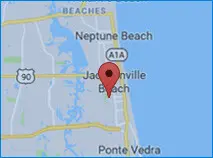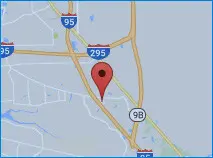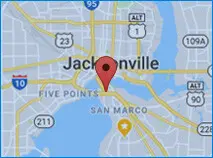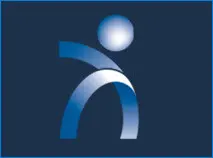Muscles of the Foot: A Comprehensive Guide
By Alex Bigale, PTA
What Muscles are in the Foot?
The foot is made up of many muscles, ligaments, tendons, and bones. They allow for movement, flexibility, and stability. The foot muscles have two main categories, called extrinsic muscles and intrinsic muscles. The foot’s extrinsic muscles originate in the lower leg. They insert into different portions of the foot to allow for gross motor movements. Movements such as plantar flexion, dorsiflexion, inversion, and eversion. Intrinsic muscles are located within the foot and are responsible for more fine motor movements. Such as digit flexion, extension, and abduction. The Intrinsic muscles can be further broken down into the dorsum side and the plantar side. Our goal of this article is to give you a better understanding of the muscles and tendons of the foot. If you have any questions, please give us a call. We are here to help you!
Understanding the Muscles of the Foot
The foot, a complex structure with numerous muscles, plays a significant role in our daily activities. These muscles of the foot offer stability, aid movement, and provide support. This article delves into the intricacies of the foot muscle anatomy, focusing on the extrinsic and intrinsic muscles, as well as the dorsal and plantar aspects of the foot. If you’re an athlete, fitness enthusiast, or just curious about foot anatomy, this guide will offer valuable insights. Let’s get started!

Muscles in the Foot
Role and Importance of Feet Muscles
The f00t muscles are crucial for supporting our body weight, facilitating movement, and ensuring stability. They can be broadly divided into four main groups: intrinsic muscles, extrinsic muscles, anterior compartment muscles, and posterior compartment muscles. In this article we will get even more specific to help explain all of the muscles.
The intrinsic muscles, located within the foot, control fine movements and maintain the foot’s arches. These include the abductor hallucis, flexor digitorum brevis, and plantar interossei. A lack of strength in these feet muscles often leads to cramps in feet. Extrinsic muscles, originating outside the foot and extending into it, offer power and control during movement. These include the gastrocnemius, soleus, and tibialis anterior.
The muscles in the anterior compartment, at the front of the leg, aid in dorsiflexion and foot elevation. The tibialis anterior muscle, for instance, is responsible for lifting the foot and preventing it from dragging while walking. The posterior compartment muscles, located at the back of the leg, assist in plantar flexion and foot propulsion. These include the gastrocnemius and soleus, which generate the necessary force for activities such as running or jumping. Regularly experiencing cramps in your feet may be a sign that these muscles need strengthening.
By strengthening and stretching these muscles of the foot, we can improve foot function, reduce the risk of injuries, and promote overall foot health.
Muscles of the Foot: Extrinsic Muscles
Anterior Compartment
- Anterior Tibialis: Dorsiflexes and inverts the foot.
- Extensor Hallucis Longus: Dorsiflexes the foot and extends the big toe.
- Extensor Digitorum Longus: Dorsiflexes the foot and extends the 4 lateral toes.
- Peroneus Tertius: Dorsiflexes and Everts the foot.
Lateral Compartment
- Peroneus Longus: Eversion of the foot.
- Peroneus Brevis: Eversion of the foot.
Posterior (Superficial) Compartment
- Gastrocnemius: Plantar flexes the foot.
- Soleus: Plantar flexes the foot.
- Plantaris: Plantar flexes the foot.

Tendons in the Foot
Posterior (Deep) Compartment
- Posterior Tibialis: Plantarflexion and inversion of the foot.
- Flexor Hallucis Longus: First, Ray flexion.
- Flexor Digitorum Longus: Flexion of the toes.
Extrinsic Foot Muscles
Extrinsic foot muscles, originating outside the foot and extending into it, are crucial for foot function, offering stability, enabling movement, and providing support. If you’re experiencing cramps in my feet, it might be due to overuse or strain of these muscles. The foot can be divided into three main compartments: anterior, lateral, and posterior, each housing specific extrinsic muscles.
The anterior compartment contains the extensor digitorum longus, extensor hallucis longus, and peroneus tertius muscles. These muscles extend the toes, help extend the big toe, and assist in dorsiflexion and eversion of the foot. The lateral compartment hosts the peroneus longus and peroneus brevis muscles, aiding in eversion and plantarflexion of the foot, and providing stability during walking and running.
The posterior compartment is home to the powerful gastrocnemius, soleus, and plantaris muscles. These muscles, collectively forming the calf muscles, are responsible for plantarflexion of the foot, enabling you to rise onto your toes. Understanding the function of these extrinsic muscles is key to diagnosing and treating foot injuries or conditions. JOI Rehab therapists can target specific muscles to provide effective treatment plans and rehabilitation exercises to alleviate cramps in your feet.
Muscles of the Foot: Intrinsic Muscles
Dorsal Aspect (Top of the Foot)
Many of the muscles that attach to the dorsal aspect of the foot are considered extrinsic muscles. Two main intrinsic muscles are located within the dorsal aspect or top of the foot. The extensor digitorum brevis which is responsible for extending toes 2-4. The other intrinsic muscle on the top side of your foot is the extensor hallucis brevis, which aids in extending the big toe.
Plantar Aspect (Bottom of the Foot)
There are 10 main muscles of the plantar aspect of the foot (sole). These work as a group to stabilize the foot’s arch and individually control the toes’ movements. The foot muscles can also be broken down into layers. The first layer is closest to the foot’s bottom, and the layers continue deeper into the foot. So, the muscles of the first layer are:
First Layer
- Abductor Hallucis: Abducts and flexes the great toe.
- Flexor Digitorum Brevis: Flexes the lateral four toes.
- Abductor Digiti Minimi: Abducts and flexes the 5th digit (pinky toe).
Second Layer
- Quadratus Plantae: Assists the flexor digitorum longus in flexing the lateral 4 toes.
- Lumbricals: Flexes at the base of the toes but also extends the end of the toes.
Third Layer
- Flexor Hallucis Brevis: Flexes the great toe.
- Adductor Hallucis: Adducts the great toe and assists in forming the transverse arch of the foot.
- Flexor Digiti Minimi Brevis: Flexes the 5th digit (pinky toe).
Fourth Layer
- Plantar Interossei: Adducts digits 3-5 and flexes those toes.
- Dorsal interossei: Abducts digits 2-4 and flexes those toes.
Intrinsic Foot Muscles
Intrinsic foot muscles, including the abductor hallucis muscle, located within the foot, play a key role in providing stability, balance, and control during movement. These muscles originate and insert on various bones and joints within the foot.
These muscles can be divided into several layers based on their location within the foot. The first layer includes the abductor hallucis, flexor digitorum brevis, abductor digiti minimi, and the quadratus plantae. These muscles primarily maintain the foot’s arches, support the toes, and control toe movement. The abductor hallucis muscle, in particular, plays a crucial role in foot muscle anatomy.
The second layer hosts the lumbricals and the flexor hallucis brevis, aiding in flexing the toes, maintaining balance, and assisting in walking and running. The third layer comprises the flexor digiti minimi brevis and the adductor hallucis, contributing to foot stabilization and toe movements.
The final layer contains the interossei muscles, both the dorsal and plantar. These muscles stabilize the toes, allowing for proper grip and control during activities such as walking, running, and jumping. These intrinsic foot muscles are vital for support and coordination during weight-bearing activities, maintaining proper foot alignment, preventing excessive pronation or supination, and reducing the risk of injuries and cramps.
Understanding the Dorsal and Plantar Aspects of the Foot
The foot’s anatomy is complex, consisting of various muscles, tendons, ligaments, and bones. The dorsal aspect, or top of the foot, and the plantar aspect, or bottom of the foot, play crucial roles in foot movement and stability.
The dorsal aspect includes important muscles like the extensor digitorum longus, extensor hallucis longus, and tibialis anterior. These muscles primarily extend the toes and dorsiflex the foot, aiding in activities like walking, running, and jumping.
The plantar aspect, making contact with the ground during weight-bearing activities, houses various intrinsic muscles, such as the flexor digitorum brevis, abductor hallucis, and flexor hallucis brevis. These muscles flex the toes, support the foot’s arch, and maintain balance. The abductor hallucis muscle, in particular, is a key component of the foot muscle anatomy. Larger muscles, like the flexor digitorum longus and flexor hallucis longus, also reside in the plantar aspect, playing a role in plantar flexion.
The muscles in both the dorsal and plantar aspects work together to facilitate movement, provide stability, and distribute forces during activities. They are essential for maintaining proper foot function and preventing injuries and cramps in feet.
Treatment
JOI and JOI Rehab work together to develop individualized treatment programs for strains of the muscles of the foot. The immediate treatment should be the RICE method. Rest, ice, compression and elevation after an injury. A proper diagnosis by a foot and ankle physician to determine the extent of the injury. Depending on the diagnosis, your physician may place you in a cast shoe or walking boot. Physical therapy will be important to return you to the activities that you love.
If you are wondering if you have a torn foot tendon, this ARTICLE may help.
The foot is a very intercut and complex part of the body. Many injuries in the foot are problems with the bones and tendons. A few common injuries that deal with some of these muscles. These injuries include but are not limited to a: calf strain, Achilles Rupture, or shin splints. If you have any pain in your feet while attempting to complete your daily activities, JOI has orthopedic foot and ankle physicians that specialize in this field and can help. Therefore, there is no need to live with this pain, give us a call.
Related Articles:
Book an Appointment with The Jacksonville Orthopaedic Institute Today!
JOI Physicians are Northeast Florida’s most respected orthopedic practice. We continue to offer online new patient appointments. This is another option to make it more convenient to make new patient appointments with less phone hold times. Follow the link below to select your JOI MD and schedule online.
You can still call 904-JOI-2000 to make new patient JOI Physician Appointments if that is your preference.
To make appointments with JOI Rehab, please call 904-858-7045.
Therefore, Book an Appointment with a JOI Physician. By: Alex Bigale, PTA





